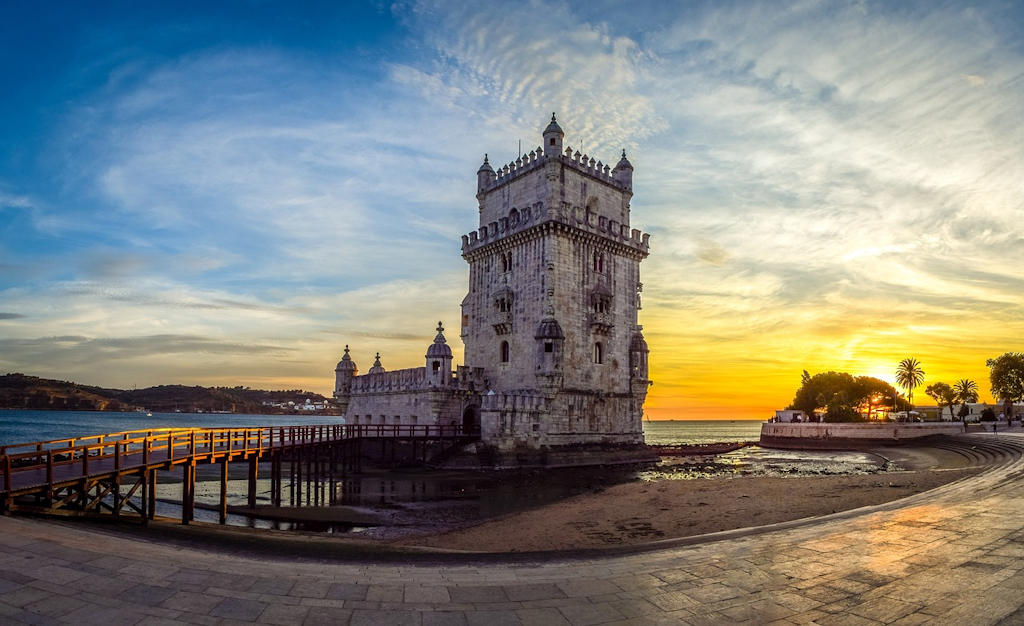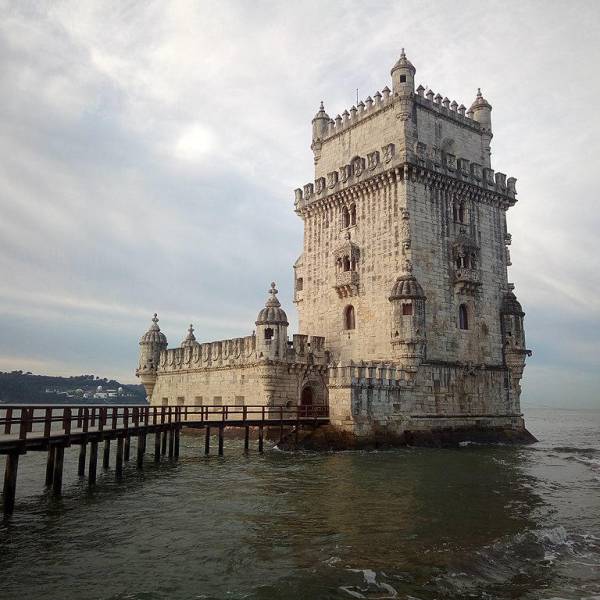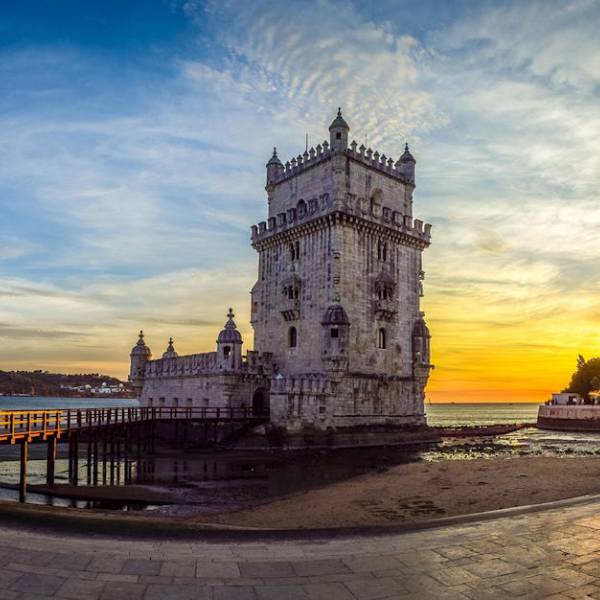Constructed during the height of the Portuguese Renaissance, Belém Tower stands as a testament to Portugal's rich maritime history and exploration prowess. It was built on a small island in the Tagus River near the Lisbon shore, contrary to the popular misconception that it was built in the middle of the river and later moved due to seismic activity. The tower was strategically positioned to enhance the defense system for the mouth of the Tagus River, complementing existing fortresses in the area.
The tower's construction was initiated by King Manuel I of Portugal in 1513, following a proposal made by Lourenço Fernandes, who emphasized the necessity of a fortified structure near Restelo Velho. The esteemed military architect Francisco de Arruda was entrusted with the design and construction of the tower. Work began in 1516, utilizing lioz limestone sourced from the Lisbon area. The construction materials were initially intended for the nearby Monastery of Santa Maria de Belém.
The building of the tower coincided with the completion of the Monastery, and both projects were supervised by Diogo Rodrigues, the treasurer responsible for delivering the necessary blocks and stones. The tower's construction progressed alongside the Grande Nau, a large ship that guarded the estuary until the fort's completion in 1519, shortly before King Manuel's death. Gaspar de Paiva was appointed as the first Captain-General, and the fortress was named the Castle of St. Vincent in honor of Lisbon's patron saint.
Over the centuries, Belem Tower has witnessed various modifications and additions. In 1571, Francisco de Holanda proposed improvements to the coastal defenses surrounding Lisbon, advocating for the strengthening and completion of the tower. During the Peninsular War, French forces occupied the tower from 1808 to 1814. It subsequently served as a prison until 1830 and as a customs control point until the abolition of duties on foreign ships in 1833.
The tower underwent renovations and restoration projects in the 19th and 20th centuries. In the 1990s, a comprehensive restoration took place, reinforcing the tower and bastion, treating the mortar joints, and restoring statues. In 1999, the restoration project received the Europa Nostra award for its outstanding preservation efforts. Belém Tower was recognized as a UNESCO World Heritage Site in 1983, and in 2007, it was added to the registry of the Seven Wonders of Portugal.
Architecturally, Belém Tower showcases the splendor of the Manueline style. The tower consists of a rectangular tower and an irregular, hexagonal bastion projecting south into the Tagus River. It is primarily constructed with beige-white Lioz limestone and features elaborate rib vaulting, crosses of the Order of Christ, armillary spheres, and intricate rope-like motifs. The arched windows, balconies, and ribbed cupolas of the watchtowers exhibit influences from Moorish architecture.
The tower's exterior is adorned with various decorative elements, reflecting Portugal's maritime history and exploration achievements. The Manueline armillary spheres, a symbol of Portugal's nautical explorations, appear at the tower's entrance. The twisted rope and elegant knots, prevalent throughout the tower's design, symbolize the country's seafaring heritage. The bastion terrace accommodates cannons for defense and offers panoramic views of the surrounding area. From this vantage point, visitors can enjoy breathtaking vistas of the Tagus River, the city of Lisbon, and the picturesque district of Belém. The tower's rooftop also features decorative battlements and turrets that add to its grandeur.
As visitors enter the tower, they are greeted by a spacious courtyard surrounded by two floors of rooms. The ground floor houses the Governor's Hall, the former residence of the Captain-General, which features beautiful Manueline decorations on its vaulted ceiling. Adjacent to the Governor's Hall is the Chapel of São Sebastião, a small chapel dedicated to Saint Sebastian, adorned with stunning azulejo tiles depicting scenes from the saint's life.
The upper floor of the tower consists of several rooms, including the Audience Hall, the King's Room, and the Chapel of Nossa Senhora da Ajuda. These rooms exhibit intricate architectural details, such as delicate carvings, ornate windows, and decorative tiles. The walls are adorned with historical artifacts and informative displays that provide insights into the tower's history and significance.
One of the most notable features of Belém Tower is its fortified bulwark, known as the Outwork. This defensive structure extends from the tower into the river and comprises a series of bastions and ramparts designed to protect the tower from naval attacks. The Outwork features gun embrasures and a drawbridge that could be raised to prevent enemy access.
Lisbon.vip Recommends
Surrounded by a picturesque waterfront setting, Belém Tower is part of a larger complex of historical and cultural landmarks in the Belém district. Nearby attractions include the Jerónimos Monastery, the The Discoveries Monument, and the Belém Cultural Center, making it a destination that offers a wealth of historical and cultural experiences.
In a nutshell, Belém Tower is like a dazzling love letter to Portugal's rich maritime heritage and architectural brilliance! Its Manueline style, with all its delightful intricacies, is a true work of art that'll leave you utterly enchanted. And the cherry on top? Its strategic spot, perfectly perched by the water's edge, gives you a front-row seat to history. So, for all you intrepid explorers setting foot in the lively city of Lisbon, this is a spot you absolutely can't miss!
Map View





